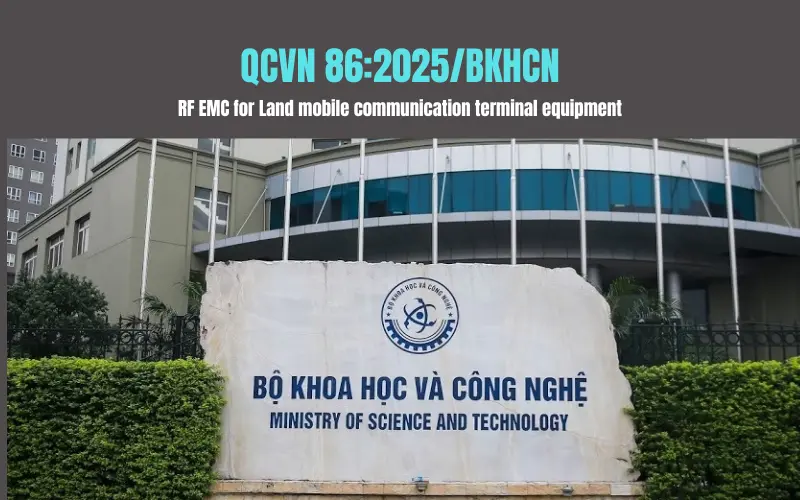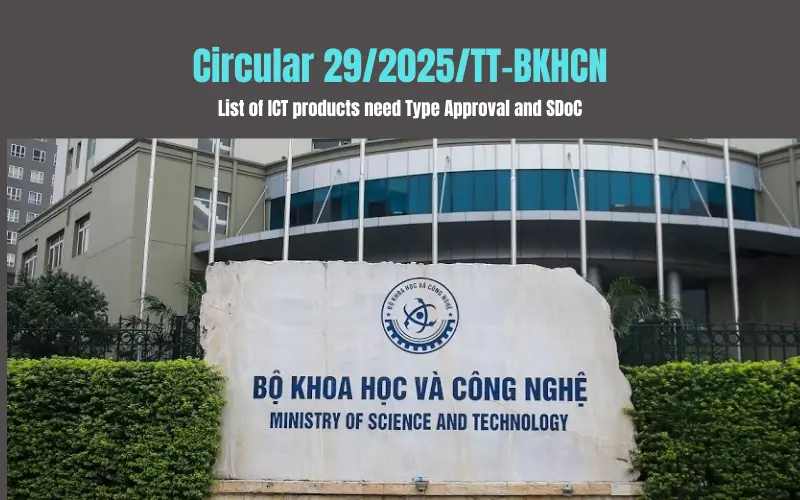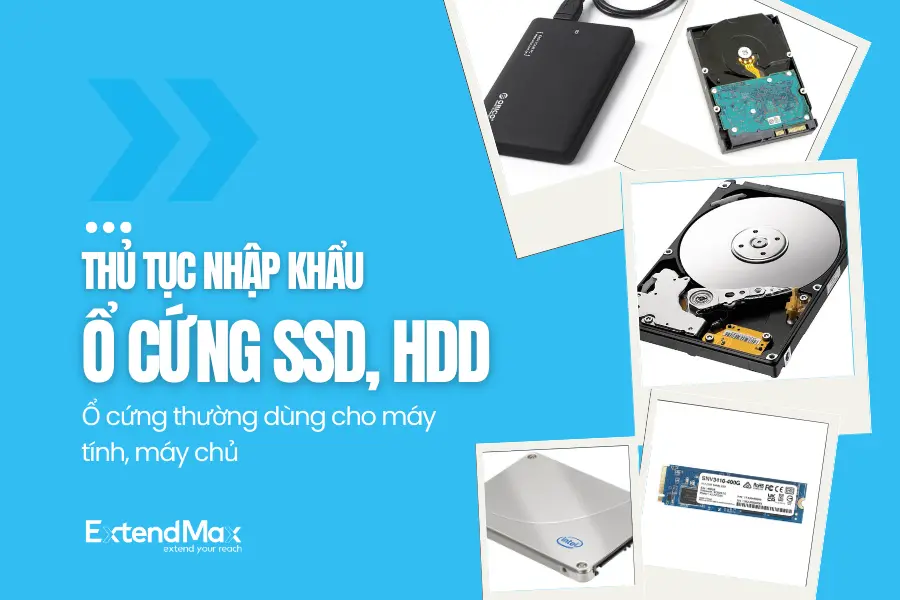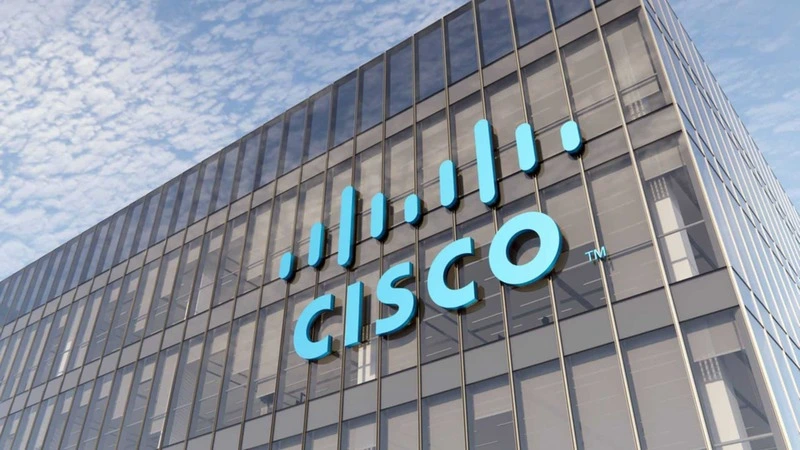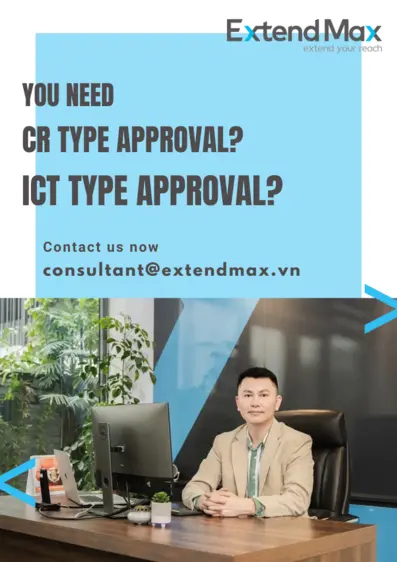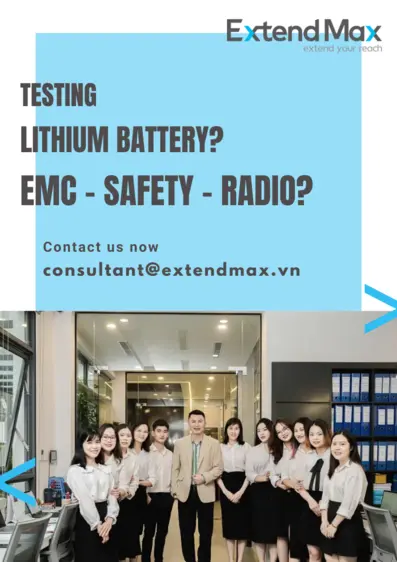Electrical cables are among the Group 2 goods under the management responsibility of the Ministry of Science and Technology. Therefore, when handling the import procedures for electrical cables, businesses need to be well-versed in specialized requirements to ensure legal compliance and smooth customs clearance. However, there are currently many guide articles providing inaccurate or outdated information, making it difficult for businesses to import this type of product. Based on our knowledge and practical experience in assisting many clients, ExtendMax will equip you with comprehensive knowledge about import procedures and conformity certification for wires and cables. This will help resolve the difficulties you encounter in preparing import-export documents and customs procedures for this type of goods.
Summary of specialized requirements for importing electrical wires and cables
Below is a summary table of the applicable and exclusion cases for specialized inspection policies regarding electrical cables:
| Specialized Policy | QCVN 4:2009/BKHCN and Amendment 1:2016 QCVN 4:2009/BKHCN | TCVN 7079 - 1, 2, 3, 4, 5, 6, 7, 8, 9:2002 |
| Exclusion Cases | Electrical wires and cables with voltages from 50V to 1000V | Explosion-proof electrical cables |
| Exclusion Cases | - Types of electrical wires and cables not having HS codes listed in the Group 2 goods catalog of the Ministry of Science and Technology (Decision No. 2711/QD-BKHCN) (electrical wires and cables with connectors already attached...) - Telecommunication cables - Electrical wires and cables with voltages below 50V and above 1000V - Electrical wires and cables already installed in electrical, electronic devices, or parts of complete electrical, electronic equipment - Electrical wires and cables imported for installation in electrical, electronic devices for subsequent export (processing export goods, temporary import for re-export goods) | Types of electrical wires and cables not having HS codes listed in the Group 2 goods catalog of the Ministry of Industry and Trade - Decision No. 1182/QD-BCT |
HS Code and Import Duty for Electrical Wires and Cables
Electrical wires and cables fall under HS Code group 8544 - Insulated (including enameled or anodized) wire, cable, and other insulated electric conductors, whether or not fitted with connectors; optical fiber cables, made up of individually sheathed fibers, whether or not fitted with electric conductors or connectors.
Detailed tariff and HS codes for electrical wires and cables are as follows:
| HS code | Description | Normal Import Tax Rate (%) | Preferential Import Tax Rate (%) | VAT (%) |
| 8544 | Insulated (including enameled or anodized) wire, cable, and other insulated electric conductors, whether or not fitted with connectors; optical fiber cables, made up of individually sheathed fibers, whether or not fitted with electric conductors or connectors. |
|
|
|
| 8544.20 | - Coaxial cable and other coaxial electrical conductors: |
|
|
|
|
| - - Insulated cables fitted with connectors, for voltage not exceeding 66 kV: |
|
|
|
| 8544.20.11 | - - - Insulated with rubber or plastic | 15 | 10 | 10 |
| 8544.20.19 | - - - Other types | 15 | 10 | 10 |
|
| - - Insulated cables not fitted with connectors, for voltage not exceeding 66 kV: |
|
|
|
| 8544.20.21 | - - - Insulated with rubber or plastic | 15 | 10 | 10 |
| 8544.20.29 | - - - Other types | 15 | 10 | 10 |
|
| - - Insulated cables fitted with connectors, for voltage exceeding 66 kV: |
|
|
|
| 8544.20.31 | - - - Insulated with rubber or plastic | 5 | 0 | 10 |
| 8544.20.39 | - - - Other types | 3 | 2 | 10 |
| 8544.42 | - - Fitted with electrical connectors: |
|
|
|
|
| - - - Other types: |
|
|
|
| 8544.42.94 | - - - - Insulated with plastic, with a core diameter not exceeding 5 mm | 25.5 | 17 | 10 |
| 8544.42.95 | - - - - Insulated with plastic, with a core diameter exceeding 5 mm but not exceeding 19.5 mm | 25.5 | 17 | 10 |
| 8544.42.96 | - - - - Other types insulated with plastic | 25.5 | 17 | 10 |
| 8544.42.97 | - - - - Insulated with rubber or paper | 15 | 10 | 10 |
| 8544.42.98 | - - - - Flat data cables with two or more conductors | 15 | 10 | 10 |
| 8544.42.99 | - - - - Other types | 15 | 10 | 10 |
| 8544.49 | - - Other types: |
|
|
|
|
| - - - Non-telecommunications, voltage not exceeding 80V: |
|
|
|
|
| - - - - Other types |
|
|
|
| 8544.49.22 | - - - - - Insulated with plastic, with a core diameter not exceeding 19.5 mm | 17 | 22,5 | 10 |
| 8544.49.23 | - - - - - Other types insulated with plastic | 15 | 22,5 | 10 |
| 8544.49.24 | - - - - - Other types, insulated with rubber, plastic, or paper | 10 | 15 | 10 |
| 8544.49.29 | - - - - - Other types | 10 | 15 | 10 |
|
| - - - Non-telecommunications, voltage exceeding 80V but not exceeding 1,000V: |
|
|
|
| 8544.49.41 | - - - - Insulated with plastic | 10 | 15 | 10 |
| 8544.49.42 | - - - - Other types, insulated with rubber, plastic, or paper | 10 | 15 | 10 |
| 8544.49.49 | - - - - Other types | 10 | 15 | 10 |
| 8544.60 | - Other Electrical Conductors, for Voltage Exceeding 1,000V: |
|
|
|
|
| - - For voltage exceeding 1 kV but not exceeding 36 kV: |
|
|
|
| 8544.60.11 | - - - Insulated with plastic, with a core diameter less than 22.7 mm | 20 | 30 | 10 |
| 8544.60.12 | - - - Other types, insulated with rubber, plastic, or paper | 5 | 7,5 | 10 |
| 8544.60.19 | - - - Other types | 5 | 7,5 | 10 |
|
| - - For voltage exceeding 36 kV but not exceeding 66 kV: |
|
|
|
| 8544.60.21 | - - - Insulated with plastic, with a core diameter less than 22.7 mm | 5 | 7,5 | 10 |
| 8544.60.22 | - - - Other types, insulated with rubber, plastic, or paper | 5 | 7,5 | 10 |
| 8544.60.29 | - - - Other types | 5 | 7,5 | 10 |
As can be seen, the HS codes for electrical wires and cables have many different classifications, and businesses need to be very careful to correctly determine the HS code of the imported goods. Incorrect declaration of HS codes can lead to risks such as: delays in customs procedures, late delivery, administrative penalties, etc.
Legal Documents Regulating the Import Procedures for Electrical Cables
When importing electrical cables, businesses need to be aware of the following legal bases:
| Document Name | Content |
| Circular No. 21/2009/TT-BKHCN | QCVN 4:2009/BKHCN |
| Circular No. 28/2012/TT-BKHCN (Amended by Circular No. 02/2017/TT-BKHCN) | Declaration of conformity and methods for conformity assessment |
| Circular No. 21/2016/TT-BKHCN | Amendment 1:2016 QCVN 4:2009/BKHCN |
| Decree No. 74/2018/ND-CP | Regulations on state inspection procedures for product quality |
| Circular No. 06/2020/TT-BKHCN | Declaration of conformity, quality inspection of Group 2 products |
| Group 2 goods catalog of the Ministry of Industry and Trade | |
| Group 2 goods catalog of the Ministry of Industry and Trade |
Import Dossier for Electrical Cables
The standard import documents for electrical cables typically include:
-
Commercial Invoice
-
Bill of Lading / Transport Document
-
Commercial Contract or Purchase Order
-
Certificate of Origin (CO) (if available)
-
Packing List
-
Technical Documentation or Product Catalog
-
Other Documents such as Certificate of Quality (CQ) (if available)
-
Imported product quality inspection registration (electronic registration via the single-window portal or a paper copy certified by the Department of Standards, Metrology, and Quality). Exceptions include telecommunication cables and cases of emergency import as directed by the Government or the Prime Minister.
Accurate and complete preparation of import documents is crucial, as it directly affects the customs clearance process. Therefore, refer to ExtendMax's tips to avoid mistakes when preparing import documents.

Market access requirements and procedures for Electrical Cables
Step 1: Register for Quality Inspection
| Documents/Materials Required | Registration Category/Standard Applied | Cost | Processing Time | Submission Location |
| 1. Import-export documents including Commercial Invoice, AWB or B/L, P/O or contract. 2. Catalog/Datasheet. 3. Quality Inspection Registration Form. | Registration Category/Standard Applied: Register according to the standards and regulations applicable to electrical cables in the Appendix - Decision No. 2711/QĐ-BKHCN or Appendix 1 - Decision No. 1182/QĐ-BCT. | No official fee. | 2~3 working days. | Submit online at the National Single Window Portal https://vnsw.gov.vn/ or directly at the provincial or municipal Department of Standards, Metrology, and Quality with a customs checkpoint. |
*Note: When submitting the quality inspection registration online, choose a sample testing unit authorized by the Ministry of Science and Technology. If you do not have an account, create one in advance as you will need to wait for verification approximately 24 hours after registration.
>>> Read more: In depth knowlege about state inspection for imported goods

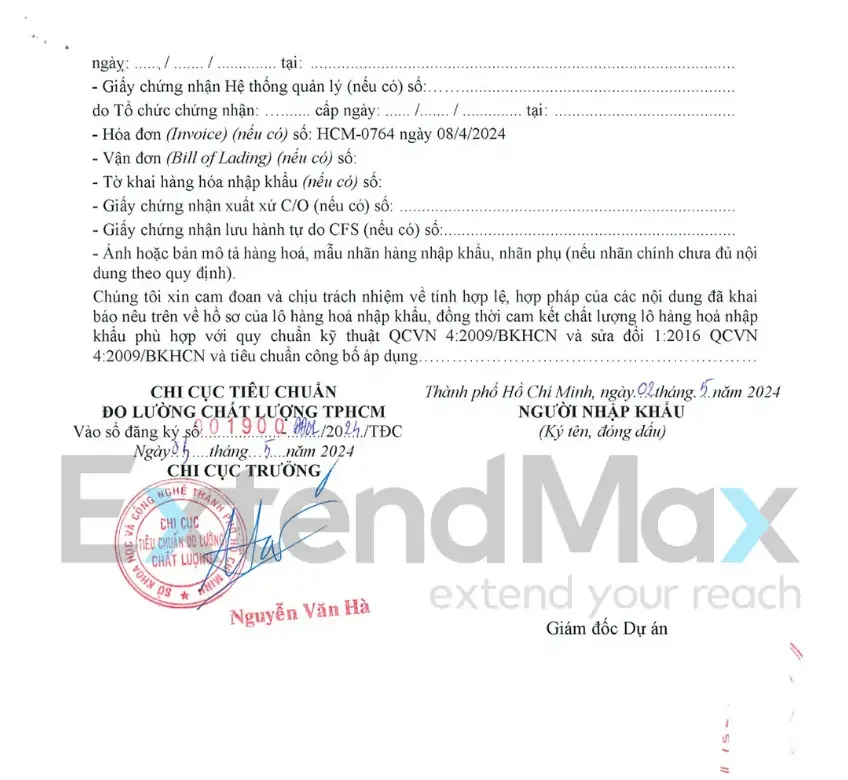
Step 2: Open the Declaration and Clear Goods
| Documents/Materials Required | Processing Time | Submission Location | Note |
| 1. Import-export documents including Commercial Invoice, AWB or B/L, P/O or contract, Packing List, CO (if available). 2. A paper copy of the Quality Inspection Registration Form certified by the Department of Standards, Metrology, and Quality or online registration through the single-window portal. | 2~5 working days depending on the declaration (green, yellow, red channels) and whether inspection is required. | Customs Department at the port of entry or the Customs Department managing the business registration location. | If there are no issues related to pricing or intellectual property protection, the goods will be cleared immediately. Businesses do not need to go through procedures to bring goods for storage. |
In some cases, additional documents may be required. Refer to: Complete and correct import-export document package for all cases.
Step 3: Safety Testing for Electrical Equipment
| Documents/Materials Required | Registration Category/Standard Applied | Cost | Processing Time | Submission Location |
| 1. Catalogue/ datasheet 2. Product sample (3-5m). 3. Fill out the sample testing registration form. | QCVN 4:2009/BKHCN and Amendment 1:2016 QCVN 4:2009/BKHCN. | Costs depend on the price list of the testing laboratory and the applicable standards. There is no general price for all types of electrical cables. | 1~2 weeks depending on the product and each stage. | Testing laboratories designated by the Ministry of Science and Technology or registered with the Ministry. |
Step 4: Conformity Certification
Imported electrict cables are typically certified for conformity according to Method 7, which is batch-based certification.
>>> Read more: Detailed Guide for Certification of Conformity According to Method 7
>>> Read more: Procedures, sequence, and methods for conformity certification
| Documents/Materials Required | Registration Category/Standard Applied | Cost | Processing Time | Submission Location |
| 1. Application for conformity certification according to the certifying organization's form 2. Business registration certificate. 3. Technical documentation (specs, datasheet). 4. Information declaration of the test sample. 5. Test and measurement results. 6. Other forms in special cases. | QCVN 4:2009/BKHCN and Amendment 1:2016 QCVN 4:2009/BKHCN. | Costs depend on the price list of the testing laboratory and the applicable standards. | 2~3 weeks depending on whether the documentation is complete. | General Department of Standards, Metrology, and Quality or a certification organization registered to conduct certification activities. |
Step 5: Declare Conformity
Based on the test results and the issued Conformity Certificate, the business proceeds to submit the results to the National Single Window Portal; this is also the step to declare conformity for the imported batch.
For domestically produced electrical cables, the manufacturer needs to declare conformity directly at the local Department of Standards, Metrology, and Quality.
>>> Read more: Procedures, sequence, and methods for Conformity Declaration
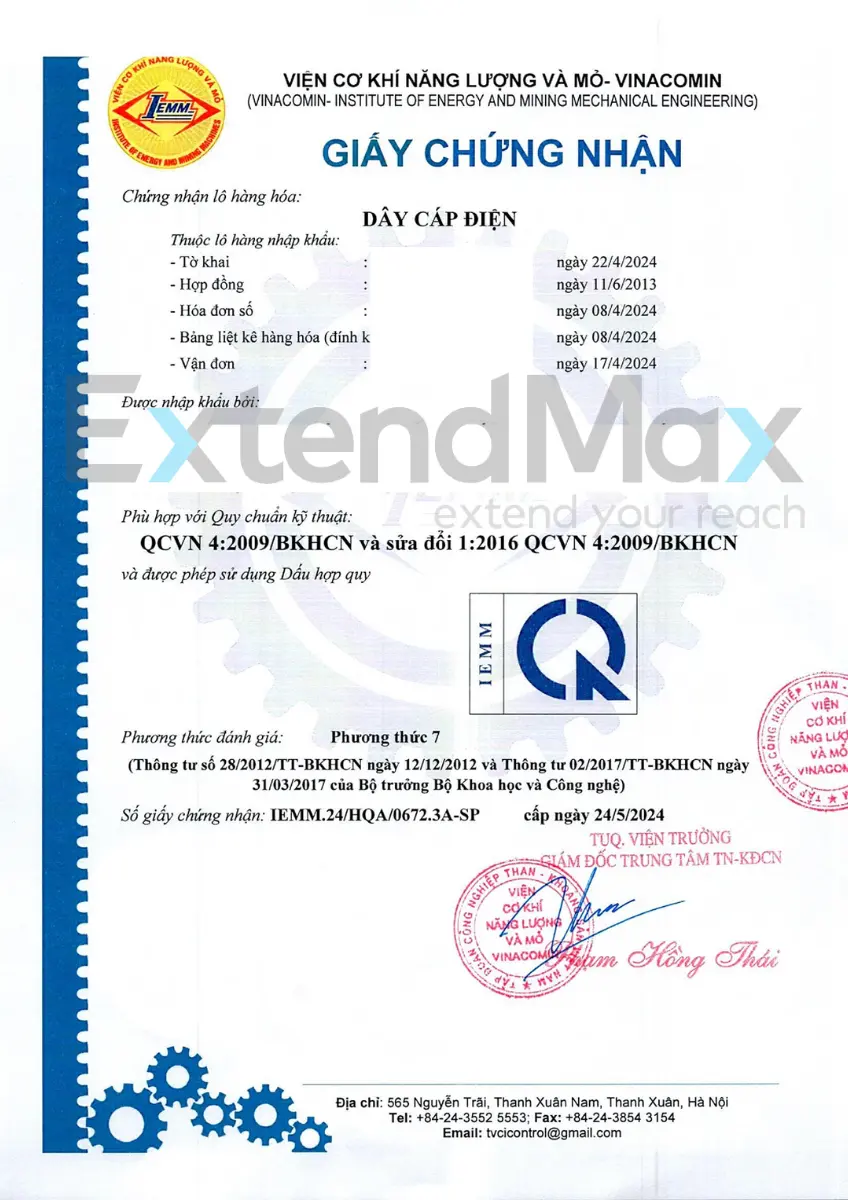
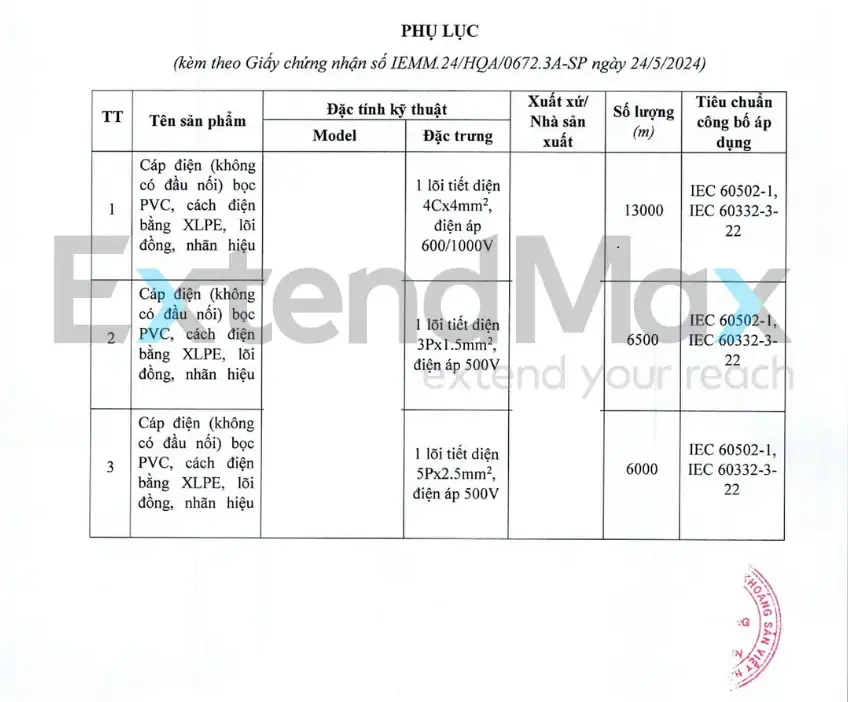
Additional Notes on Importing Electrical Cables
Beyond the information provided above, here are some additional points businesses should note, as compiled by ExtendMax from supporting numerous clients in importing electrical cables:
-
Labeling Requirements: According to Decree No. 43/2017/ND-CP, when importing electrical cables, it is crucial to label the goods appropriately. This is also an important step for managing and identifying the origin and responsible entity.
-
Quality Inspection and Conformity Certification: Quality inspection and certification of conformity for electrical cables are performed according to Method 7 - per-lot approval.
-
Prohibited Items: Used electrical cables are on the list of prohibited imports. If needed, you must obtain a license to import used electrical cables as scrap.
How can ExtendMax help you in importing Electric Cables?
With many years of experience in testing and certifying electrical and electronic equipment for numerous manufacturers, importers, and leading global brands such as Fujitsu, Panasonic, Toshiba, Hitachi,... ExtendMax can support you with all procedures for importing electrical cables, including:
- Assessing documents, identifying the most suitable and cost-effective method for conformity certification for your business.
- Consulting and supporting initial import procedures for customs clearance, such as drafting and submitting the quality inspection registration dossier for imported electrical cables.
- Representing businesses in performing testing procedures, certification of conformity, and declaration of conformity for electrical cables.
- If a business needs to import a small quantity of electrical cables or receive goods without payment from a parent company or foreign partner, ExtendMax has the capability and conditions to provide IOR services.
Knowledge and experience are meant to be shared. We would greatly appreciate your support by leaving a comment, rating below the article, and sharing it with your friends or colleagues in the import and logistics industry. Follow ExtendMax on our Facebook fanpage or LinkedIn to stay updated with the latest information.
↓ ↓ ↓ ↓ ↓ ↓ ↓


